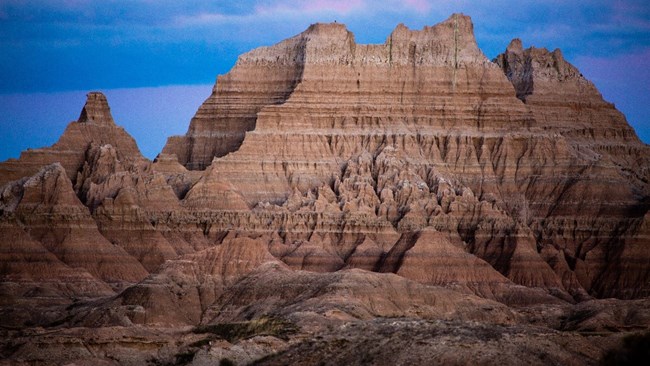Learn about NRCAs
The Natural Resource Condition Assessment (NRCA) Program provides framework, funding, and publishing support to parks to aid in the synthesis and documentation of natural resource conditions. Condition assessment reports are a tool to describe selected park resources, and record a snapshot of their current condition, identify trends, and identify potential or current threats and stressors. Understanding the condition and trend of natural resources is key for parks and NPS planners to appropriately prioritize and allocate stewardship resources.

NPS/Mackenzie Reed
Traditional NRCA Report: 2018
In order to better understand the natural resources and processes in the park, a Natural Resource Condition Assessment was written and published in 2018. The condition assessment for Badlands National Park began with a facilitated discussion engaging both park leadership and natural resource managers. NPS natural resource experts, park staff, and network personnel identified nineteen key resources to evaluate:
- Viewshed |
- Black-tailed Prairie Dogs |
|||||
- Night Sky |
- Black-footed Ferrets |
|||||
- Soundscape |
- Bison |
|||||
- Air Quality |
- Swift Fox |
|||||
- Surface Water Quality |
- Bats |
|||||
- Geology |
- Bighorn Sheep |
|||||
- Paleontological Resources |
- Bobcats |
|||||
- Vegetation |
- Mule Deer |
|||||
- Birds |
- Herpetofauna (Reptiles and Amphibians) |
|||||
- Pollinators |
|
Five of the natural resources evaluated were considered to be in good condition: viewshed, night sky, bighorn sheep, bobcat, and mule deer; nine resources were given a condition rating of moderate concern: soundscape, air quality, surface water quality, geology, vegetation, bison, bats, herpetofauna and pollinators; four resources were given a condition rating of significant concern: paleontological resources, prairie dogs, black-footed ferrets, and swift fox; and the condition of birds could not be determined.
Key challenges identified include potential future vulnerability of Badlands National Park to land use changes and activities on adjacent lands, and the importance of staying informed of impending changes in the surrounding towns and counties that could affect park resources. Communicating effectively with neighbors is key to protecting park resources. Additionally, park managers emphasized the importance of continued collection of natural resources monitoring and inventory data for a variety of natural resources and prioritized maintaining a consistent monitoring program.
For other reports and natural resource datasets visit the NPS Data Store.
Source: NPS DataStore Collection 7765 (results presented are a subset). To search for additional information, visit the NPS DataStore.
Last updated: December 16, 2022
